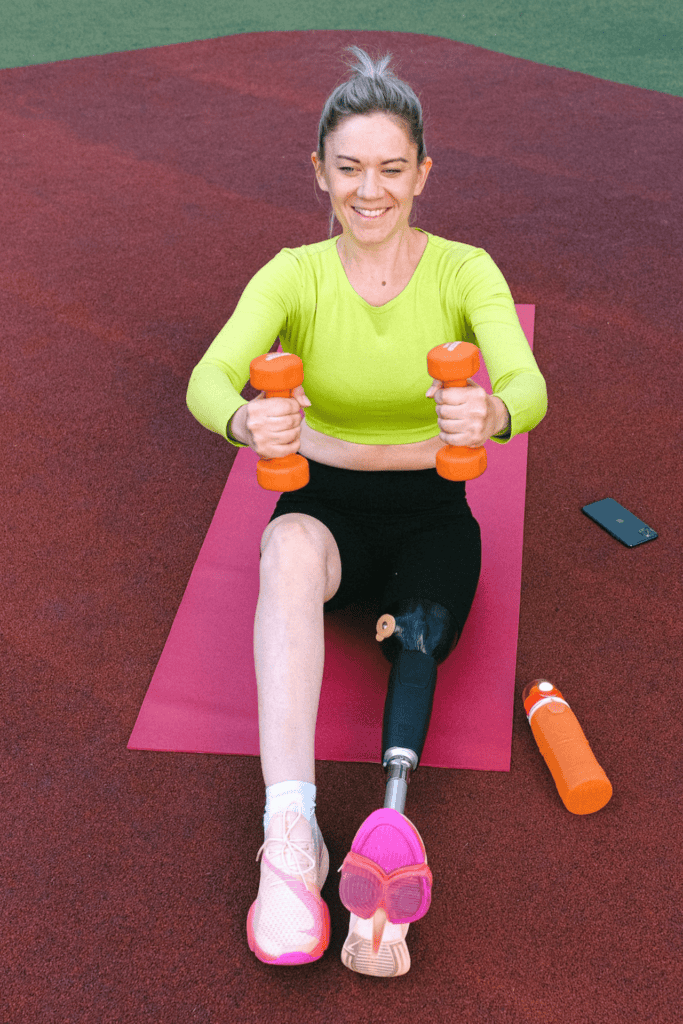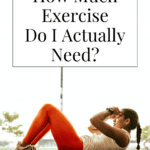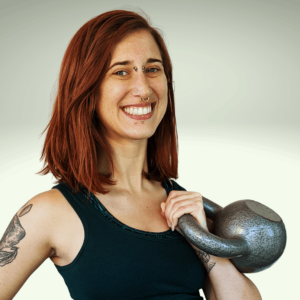How Much Exercise Do I Actually Need?
“How much exercise do I need” is a super common question, especially when a person starts working out!
The short (and sometimes unhelpful) answer is: it’s different for everyone! Exercise choices vary widely, so you really do get to choose what works best for you, your body, and your schedule. There are some guidelines you can follow to help you figure out what that is, which are laid out below.
Before getting into that, it’s safe to say that exercise has a huge and positive impact on a person’s health day to day and year to year. Studies generally conclude that the more exercise and movement you do, the better, and that the general population doesn’t get enough of it regularly.
How do I know if I’m doing enough exercise per workout?
How much you do during a workout depends on your body, your goals, and your experience with exercise. A goal of general health usually means slow and steady training, while a more intense goal needs more intense training.
When it comes to workout style, some prefer to focus on a couple exercises during a shorter workout, while others like to do a variety of movements during a longer one. Try different ways of exercising to help you decide how you like to train!

How much exercise is “enough”?
When you start an exercise plan, you want to start small and build as you see fit. Try starting with a short amount of time, such as a couple minutes of jogging, or a few strength exercises as a workout before gradually increasing.
As your body adapts to continued exercise and gets stronger, you will need to increase the amount of work you’re doing, either by using heavier weights or doing more of your chosen exercise.
It might be time to try more if during a workout you don’t feel like you did much at all. If you already move a lot or have a history with exercise, you might start with a more intense workout than someone who just started for the first time.
If you’re starting to exercise again after a long (3+ months) break, consider starting with less than you were doing prior to your break. Jumping back into your old workout schedule after time off can set you up for doing too much or even possibly getting injured. Give your body the space to recover while you figure out your new workout plan.
What is too much exercise?
On the flipside, if you find yourself doing so much that you’re exhausted or unable to keep good form during your exercises, it’s probably too much for one workout.

Feeling super sore after a workout, especially for multiple days after, can be an indicator that you’re doing too much. DOMS, or delayed onset muscle soreness, usually appears later in the day after a workout or the following day.
Some of this is fine- your muscles are doing something they’re not used to! Give those muscles time to recover and get stronger, and they’ll be ready to go for your next workout in a day or two.
It’s important to point out here that sweat and soreness aren’t necessarily indicators of a “good” workout, even if it makes you feel like you had a good workout.
Even if you don’t get super sweaty during and sore after a workout, it doesn’t mean the workout wasn’t effective. You need less than you think to effectively exercise and see results.
How many hours exercise a week?
The most significant factor for how much you exercise per week is time. How much time do you actually have in your week to dedicate to exercise?
If there is a lot of space in your week, you might be able to commit to a few longer workouts, and if you don’t have much time your exercise might happen in short moments throughout the week.
There are some official guidelines for exercise that you can use as a baseline:
- 150 minutes per week of moderate-intensity activity (fast walking, pushing a lawnmower, riding a bike, going up and down stairs, etc.)
- and at least two full body strength training workouts.
It might seem like a lot, but you can divide this time however you like and work it into your weekly schedule.
Two to three full body workouts a week starting out is a great way to build consistency and see results while still leaving plenty of time for recovery. Don’t forget about recovery in between your workouts- that’s when your muscles are actually doing the growing! Wait a day or two before working the same muscles again, or even longer if you’re not feeling great that week.
Acknowledge all the other non-workout movement you’re doing during a week, because it absolutely helps you live a healthier life, even if it doesn’t feel like it counts. If you have a day where you workout in the morning and then do something movement-based at night like going dancing, that’s a lot for one day!

To get more movement through the week, you can add activities that happen outside of a structured workout such as regular walks, hiking, dancing, or a daily yoga practice.
Exercise Over Months and Years
The more you exercise, the better idea you’ll have about what is right for your body and what types of exercise you enjoy doing. Of course because life happens, we can’t always keep workouts as consistent as we want.
Long term, it’s okay if your workout plan changes with your life. Some periods of time might be better for more workouts, during others you might prioritize that time elsewhere. Think about staying active, even if you can’t get regular workouts in. You can find other ways of moving, such as a chair that promotes movement or walking while taking a phone call.
What happens if you exercise too much?
More exercise isn’t always better, and too much exercise over time can result in overtraining.
If you start experiencing symptoms like poor sleep, not eating enough, low energy levels, noticing your workouts feel more challenging, muscle overuse injuries, and mood changes, you might be doing too much exercise with not enough recovery time. Your body needs time to rest and recover, as that’s when your muscles are doing the strengthening.
Use these guidelines to help you decide how much you want to exercise, but most importantly, you are the expert on your own body. Listen to how it feels as you add more exercise into your life. Most importantly, find exercise you enjoy and want to do!
Sarah Siertle, a strength and movement coach, specializes in introducing people to strength training and works to make the fitness world a more inclusive place. She has been a movement instructor since 2012 and also teaches swing dance around the US. Find other articles written by Sarah on her coach profile. Let Sarah help you get STRONG so you can take advantage of life’s adventures!






